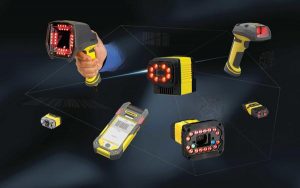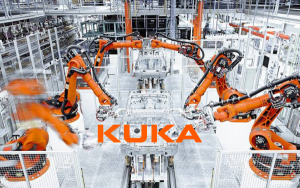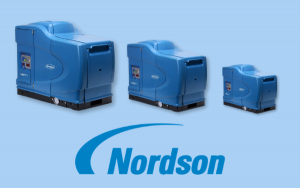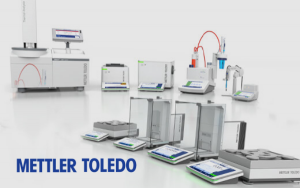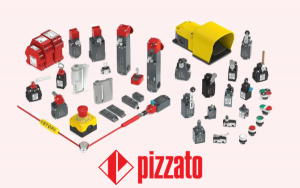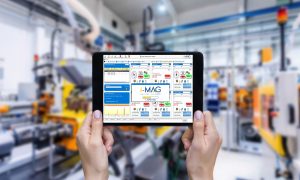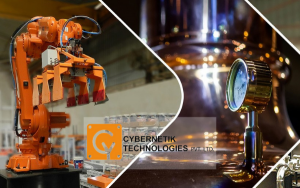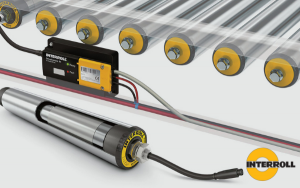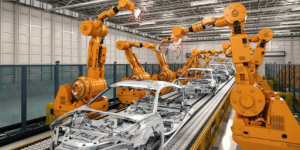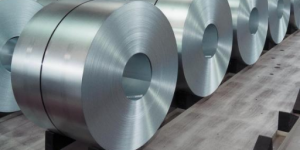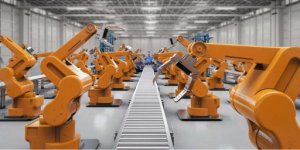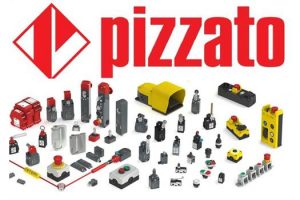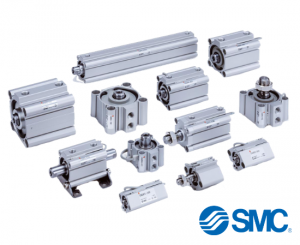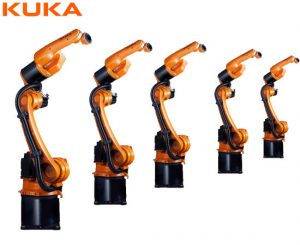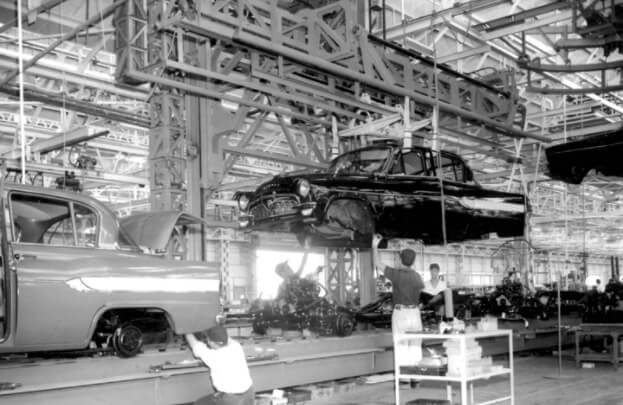 Các dây chuyền lắp ráp của hãng sản xuất xe ô tô Ford đã áp dụng mô hình Just In Time từ những năm 1930. Cần nói thêm rằng Ford là người đi đầu trong việc áp dựng các dây chuyền sản xuất. Tuy nhiên, phải đến những năm 1970, quy trình sản xuất theo mô hình Just In Time mới được hoàn thiện và được hãng Toyota áp dụng. Just In Time được phát triển và hoàn thiện bởi ông Ohno Taiichi của Toyota. Ông đã phát triển những triết học này như một phương pháp nhằm đáp ứng các yêu cầu của khách hàng với thời gian nhanh nhất. Có thể nói mô hình Just In Time được sử dụng không chỉ để giảm bớt hao phí trong sản xuất mà còn để sản xuất hàng hóa sao cho sản phẩm đến tay khách hàng nhanh và chính xác khi họ cần.
Các dây chuyền lắp ráp của hãng sản xuất xe ô tô Ford đã áp dụng mô hình Just In Time từ những năm 1930. Cần nói thêm rằng Ford là người đi đầu trong việc áp dựng các dây chuyền sản xuất. Tuy nhiên, phải đến những năm 1970, quy trình sản xuất theo mô hình Just In Time mới được hoàn thiện và được hãng Toyota áp dụng. Just In Time được phát triển và hoàn thiện bởi ông Ohno Taiichi của Toyota. Ông đã phát triển những triết học này như một phương pháp nhằm đáp ứng các yêu cầu của khách hàng với thời gian nhanh nhất. Có thể nói mô hình Just In Time được sử dụng không chỉ để giảm bớt hao phí trong sản xuất mà còn để sản xuất hàng hóa sao cho sản phẩm đến tay khách hàng nhanh và chính xác khi họ cần.
What is Just In Time?
Just In Time (JIT) is a concept in modern manufacturing. Just In Time’s succinct summary is: “The right product – in the right quantity – at the right place – at the right time”. In Just In Time, processes that do not create added value in the production or service delivery process must be eliminated. And so, the system only produces what the customer wants.
Just in time towards the goal:
- Zero inventory.
- Zero waiting time.
- Zero costs incurred.
JIT moves material to the right location at the right time, just before the current process ends. This increases efficiency by minimizing the space required to “hold” materials before they are actually needed. It also reduces waste and loss by receiving enough goods for the production process. JIT keeps the process smooth and streamlined without a lot of extra stuff going around.
The JIT system allows the system to operate most efficiently, avoiding unnecessary waste.

II. How the Just In Time model works
JIT models fail because of wrong forecasts or when production or quality problems arise. For example, when one supplier has a machine problem or they stop producing, every other partner has to wait — and the entire system is down during that time.
This can lead to unexpected time and cost losses that can have a huge impact on the business. There can also often be settlement fees, withholdings, and other hidden costs that can negatively impact business.
So, to be successful with the JIT model, organizations need to:
- Stable, consistent production
- Trusted supplier
- Quality machinery and uniform workmanship, no errors
- Predictions driven by artificial intelligence
Some companies are using machine learning with AI to forecast demand and anticipate potential problems in advance. Machine learning and networking through Internet of Things allow JIT to operate more efficiently than ever before. For example, cloud ERP and blockchain technology allows multiple departments and partners to share and analyze data in real time for quick, efficient decision making. Supply chain partners can keep each other up to date, so everyone knows exactly where orders are and what’s going on.

III. Advantages of Just In Time model
The Just In Time system helps to reduce the amount of inventory “located” along the supply chain. This reduces the need to store or transport excessive material, thereby minimizing damage, loss, and costs. Parts of the supply chain are moving quickly, creating a more streamlined process.
This process cuts inventory costs because manufacturers don’t have to pay for storage. They also no longer have unsold inventory, even if the order is canceled or unfilled.
The purpose of the JIT system is to turn the entire supply chain into a well-oiled machine with a seamless split between all partners and logistics markers.
IV. Disadvantages of Just In Time model
Despite the benefits of JIT, it can be difficult to manage in practice. The entire supply chain needs to be perfectly synchronized from A to B, which can be understood as a challenge with so many moving pieces. It requires manufacturers to accurately forecast demand in advance, so they know exactly what to ship and when. Forecasters need to know what customers want and when they want it, scientifically. If a company doesn’t know the market, audience, and timeline for growth, the JIT approach can lead to serious stagnation.
Or, if one part of the puzzle breaks like we saw with the Toyota example, the rest of the line has to stop and wait too. There’s not much room for error.
V. Which businesses should apply the Just In Time model?
Most effective for businesses with repetitive production activities.
The important feature of the Just in time model: it is better to apply small batches of approximately the same production scale, to receive materials during production, than to produce large batches and then store them in stock. capital stagnation. It also makes it easier to check quality, reducing damage when mistakes are made.
The flow of “goods” circulating during production and distribution is detailed for each step so that the next step can be performed immediately after the previous stage is completed. No workers or equipment have to wait for product input.
Each stage only makes an exact amount of product/semi-finished product that is required by the next production stage. The worker in the next process is the customer of the previous process.
They are responsible for checking, accepting and selling the delivered products before performing their work. Unsatisfactory products will be removed from the line and reported to the whole System to adjust the plan in time.
Using the Just in time model requires close coordination between the manufacturer and the supplier. Strengthening social division of labor through cooperation with affiliated companies.
In order for Just in time to be successful, businesses need to synchronously combine many measures: apply a single-product flow line (products are transferred according to the production process, not according to the specialized department in order to minimize transportation costs). ), self-checking ability (post-testing, pre-acceptance test), normalization (distributing work evenly every day, no days are too busy, days are low).
Just in time follows a few basic principles:
- No production unless the customer has ordered.
- Average customer requirements and thus all resources become averaged and stable throughout the plant.
- All stages must be communicated through a simple visual management tool – Kanba
- Maximize flexibility in resources and machines.





